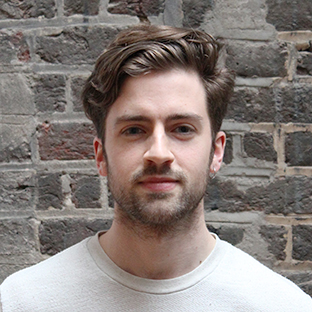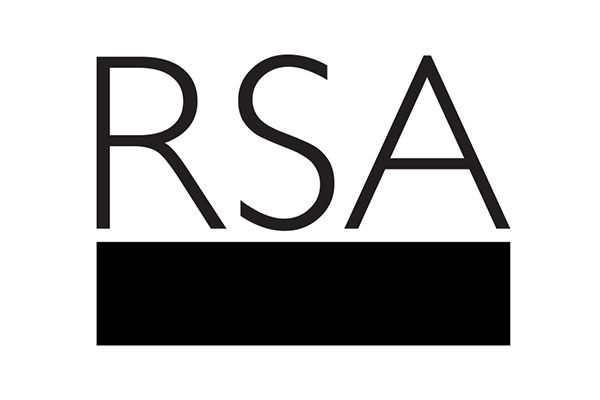Asking what binds human beings together, Richard Sennett recently offered two ingredients that act as cultural glue: ritual and narrative. Speaking at a great lecture with Dr Rowan Williams just a couple of weeks ago, Sennett argued that, “without shared rituals and narratives society has no purpose. The everyday relations between human beings risks falling apart. And yet modern society courts just that risk. The cultural glue of ritual and narrative is weakening.” Williams seemed to strike the same chord - referring to his latest book on Dostoevsky he pointed out that storytelling as ritual allows us to bond with one another as well as with a “realm beyond ourselves” yet it too is being washed away.
Asking what binds human beings together, Richard Sennett recently offered two ingredients that act as cultural glue: ritual and narrative. Speaking at a great lecture with Dr Rowan Williams just a couple of weeks ago, Sennett argued that, “without shared rituals and narratives society has no purpose.  The everyday relations between human beings risks falling apart. And yet modern society courts just that risk. The cultural glue of ritual and narrative is weakening.” Williams seemed to strike the same chord - referring to his latest book on Dostoevsky he pointed out that storytelling as ritual allows us to bond with one another as well as with a “realm beyond ourselves” yet it too is being washed away.
The everyday relations between human beings risks falling apart. And yet modern society courts just that risk. The cultural glue of ritual and narrative is weakening.” Williams seemed to strike the same chord - referring to his latest book on Dostoevsky he pointed out that storytelling as ritual allows us to bond with one another as well as with a “realm beyond ourselves” yet it too is being washed away.
Having this shared narrative and this common ritual allows us to reaffirm our collective identity and strengthen our belonging to one another. In the process we are able to develop a strong place-identity; that is, an identity made with a mixture of memories and joint experiences that connects us to people around us and to the places we live in and which in turn acts as a kind of catalyst for participation – it essentially gives us a non-material resource from which we can draw upon to get involved in our communities and the places in which we live.
Shared bonds with others can give us the mutual trust we need in order to commit to another’s benefit; it instils within us loyalty needed to motivate civic action; and, from a more rational perspective, it gives us an actual stake in our environment that we are eager to defend. A few years ago Mary Corcoran undertook some research in European cities which showed that residents were able to draw upon collective memories of the past in order to come together, clean public areas and tackle prolific drug dealers; a sure sign of the power of narrative and the bonds it creates. It might be that any sort of participatory drive set out through the Big Society will need, among other things, an equally Big Narrative. Or to be more precise, each place will need its own defining mini-narrative. Freedom to shape the places you live in is one thing, but if there’s no underlying bond or continuing narrative tying you to an area, there’s not that core incentive or that stake that might otherwise have impelled you to participate.
But as Sennett said in his lecture, the cultural glue that is narrative has weakened over the past few decades. It’s difficult to understand exactly why this has happened and there’s bound to be a huge number of reasons in play – from the transient mobile nature of society which prohibits any large collection of shared experiences to the rapid turnover of our physical and urban environment which erodes our collective memories – something Glenn Albrecht terms as Solastalgia (Geoff Mulgan pointed out at the same lecture event that we’re now living to such an age where we are beginning to have a longer lifespan than many of the buildings we live and work in - something that is pretty detrimental for the build up of memories that our physical environments store).
Having said that, it’s still clear that people seem to have an innate need for a story that they belong to and an inherent desire for a strong binding narrative; so much so that we seem to try and plug this vacuum in a number of other places. A piece a few months back in the Autumn RSA Journal by Ross Deuchar pointed out that gangs were able to offer young people a "surrogate family" with strong social support, bonding and identity. A more recent piece drawn upon in ESRC’s Identities and Social Action programme put heavy drinking binges between friends as a way for young people to be part of a  community; a kind of ritual act that binds them together through regular bouts of drinking. And then there’s a widespread consumer culture which Amitai Etzioni sees as a fairly empty collective route to self-actualisation.
community; a kind of ritual act that binds them together through regular bouts of drinking. And then there’s a widespread consumer culture which Amitai Etzioni sees as a fairly empty collective route to self-actualisation.
It has to be said that sometimes these rituals, narratives and acts of belonging do actually deliver some benefits but overall it’s fairly obvious to say that they are pretty unsustainable and damaging to our environment, to others around us and to ourselves. So how do we form a strong narrative that moves us away from this kind of "bad belonging" to a "good belonging"? How do we bring together stories that tie us to a place and instil within us a desire to participate and simply get involved in our communities? There’s probably a fair few ways towards achieving this but I couldn’t help noticing throughout the Sennett/Williams lecture that the main attributes of the arts kept coming back to what Sennett said was required to reinvigorate narrative.
Sennett pointed out that one of the key parts of ritual and narrative is that it has to be theatrical and accessible so that everybody can participate. Participants are giving "expressive performances" that everybody can see and everybody can relate to and which can reaffirm our connection to one another. This is something right at the heart of the arts. Art in all its forms provide a stage upon which narrative can be developed and where the sometimes weak connections between one another can be strengthened and highlighted.
If you take a landmark sculpture like the Angel of the North it’s these kinds of defining symbols that can help make a place distinct from another and give residents a sort of self-esteem about the unique identity of the place in which they live. But one of the most  important things about art is that it can help develop bridging social capital as well as bonding social capital. Instead of ‘Alamo-identities’ that can come about from initiatives that mean communities disassociate with one another more than they associate within one another, art is something that might just be able to transcend that parochial feeling – without trying to milk a cliché too much, it brings people from different backgrounds together to share a common story, a common narrative. Just look at the way the latest 4th plinth has been able to breathe a bit of narrative and story back into Trafalgar Square.
important things about art is that it can help develop bridging social capital as well as bonding social capital. Instead of ‘Alamo-identities’ that can come about from initiatives that mean communities disassociate with one another more than they associate within one another, art is something that might just be able to transcend that parochial feeling – without trying to milk a cliché too much, it brings people from different backgrounds together to share a common story, a common narrative. Just look at the way the latest 4th plinth has been able to breathe a bit of narrative and story back into Trafalgar Square.
Photo of Richard Sennett courtesy of Richard Sennett Photo of Angel of the North by Antony Gormley by Pikaluk
Related articles
-
The virtual time machine
Julian Thompson
This time last year our Projects team marked the coming of Christmas by having a whip round and hiring a Blue Badge guide to take us on a wintry, mulled wine-fuelled tour of the area around the RSA building in John Adam Street.


Be the first to write a comment
Comments
Please login to post a comment or reply
Don't have an account? Click here to register.